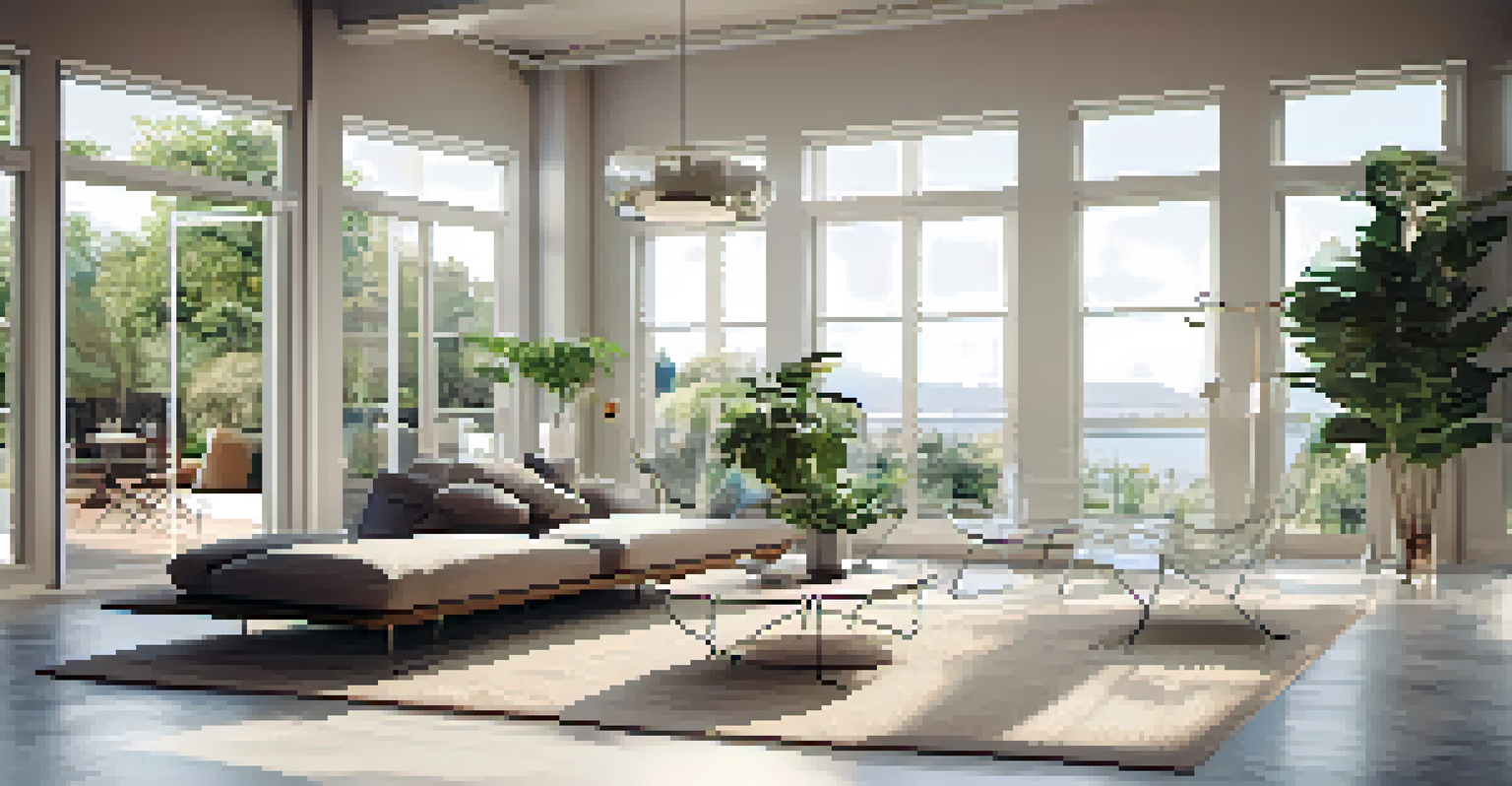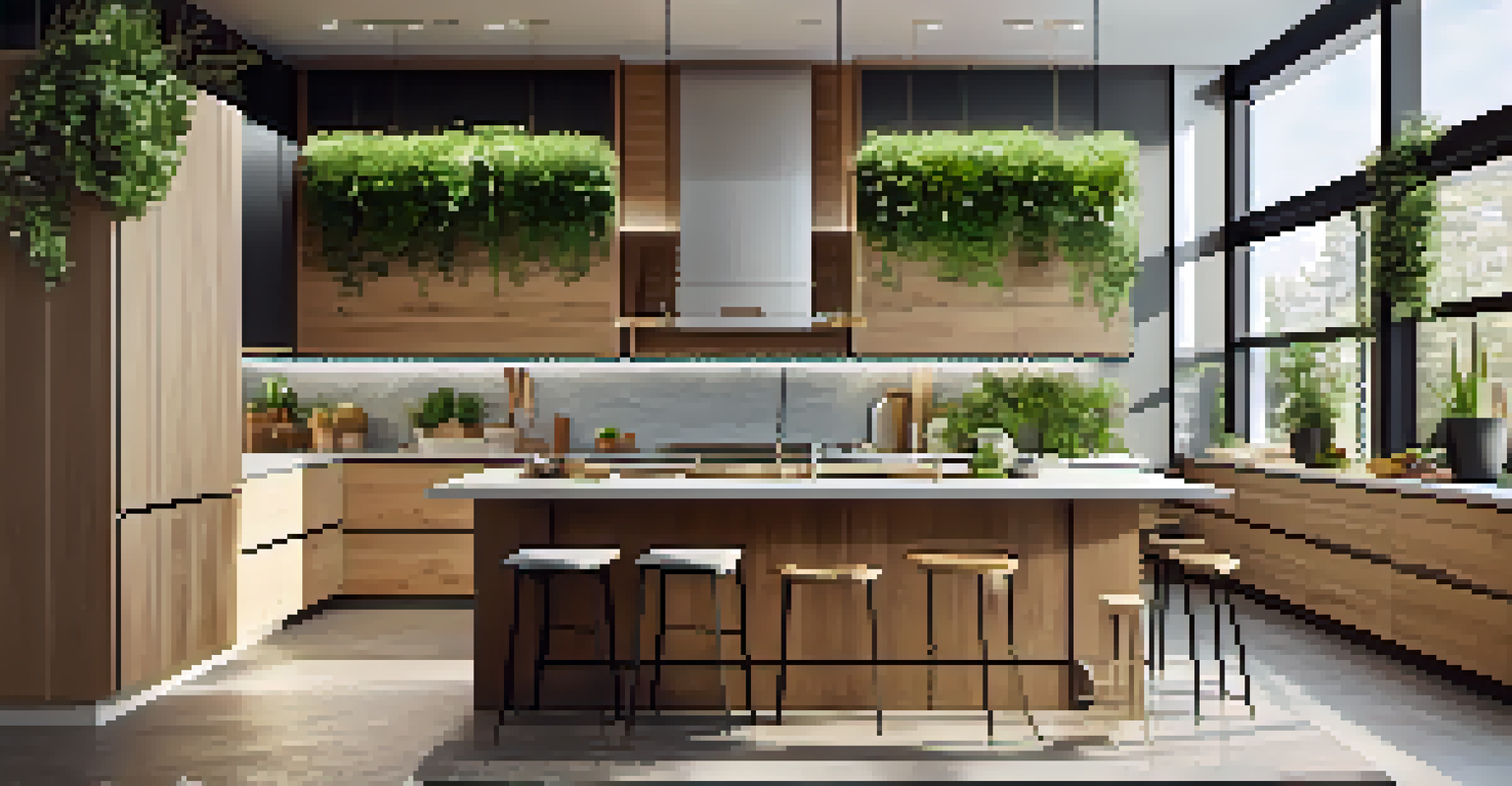Light and Airy: Designing Small Spaces with Natural Light

Understanding the Importance of Natural Light
Natural light can transform a small space, making it feel larger and more inviting. When sunlight floods a room, it not only brightens the atmosphere but also boosts mood and productivity. In small spaces, the right amount of light can create an illusion of depth, allowing you to maximize every square foot.
Light is the source of life; without it, the world would be a dull and lifeless place.
Think of natural light as a painter’s brush, adding warmth and vibrancy to your canvas. It highlights textures, colors, and shapes, creating a dynamic environment. For instance, a sunlit corner with plants and soft textiles can become a cozy reading nook that feels expansive and comfortable.
Moreover, incorporating natural light into your design can significantly reduce energy costs. By relying more on daylight, you can cut down on your electricity usage, making your home both eco-friendly and budget-friendly.
Choosing the Right Color Palette
The colors you choose for your small space can greatly influence how light interacts within it. Light colors, like whites, soft pastels, and light grays, reflect sunlight, creating a brighter and more airy feel. On the other hand, darker colors can absorb light, which might make a small room feel even smaller.

Consider using a monochromatic scheme with varying shades of the same color to keep the space feeling cohesive. For example, pairing a soft cream with a light beige can add depth while still promoting brightness. This approach allows for visual interest without overwhelming the senses.
Natural Light Enhances Spaces
Incorporating natural light creates an inviting atmosphere, boosts mood, and can reduce energy costs.
Additionally, don't shy away from incorporating bold accents in your decor. A vibrant piece of art or a colorful throw pillow can provide a delightful contrast to a light palette, adding personality without sacrificing the spacious feel.
Maximizing Window Space for Light
Windows are the primary source of natural light, so maximizing their potential is crucial in small spaces. Consider using sheer curtains that allow light to filter through while still providing some privacy. These lightweight fabrics can soften harsh sunlight without blocking it completely.
The best rooms have something to say about the people who live in them.
Another strategy is to place mirrors strategically across from windows. Mirrors reflect light and create an illusion of depth, making your space feel more expansive. For instance, a large mirror on one wall can double the effect of your window, brightening the room even further.
Don’t forget about the window sills! Keeping them clear or adorned with light-colored plants can enhance the light flow. A well-placed potted plant can add a touch of nature while still allowing sunlight to pour in.
Incorporating Open Spaces and Minimalism
Embracing an open floor plan can significantly enhance the natural light in your small space. By eliminating unnecessary walls or partitions, you allow light to flow freely throughout your home. This layout not only brightens the space but also creates a sense of continuity and openness.
Minimalism plays a crucial role here as well. By reducing clutter and keeping furniture to a minimum, you promote a more serene environment. Think of it as clearing the canvas before painting; less clutter allows the beauty of natural light to shine through.
Color Choices Affect Light
Selecting light colors can reflect sunlight and make small spaces feel brighter and more expansive.
Opt for multifunctional furniture that can be easily moved or reconfigured. Pieces like ottomans with storage or foldable tables can provide versatility while keeping the space airy and light.
Choosing Light-Weight Furniture and Decor
In small spaces, the weight of your furniture can affect how light is perceived. Opting for light-weight furniture, such as transparent acrylic chairs or glass tables, can create an airy feel. These pieces occupy less visual space, allowing light to penetrate more freely.
Consider furniture with legs that are elevated off the ground. This design choice helps to create a sense of openness and allows more light to flow beneath, making the room feel less cramped. For example, a sofa on legs can make a small living area feel more spacious.
In terms of decor, choose items that are simple and functional. Floating shelves can display decor without taking up floor space, while hanging lights can keep surfaces clear, helping to maintain that light and airy feel.
Bringing the Outdoors In
Integrating nature into your design can enhance the feeling of light and airiness in small spaces. Plants not only purify the air but also create a connection with the outdoors. Consider placing potted plants near windows to take full advantage of natural light.
Using natural materials, such as wood or stone, in your decor can also evoke a sense of the outdoors. For instance, a wooden coffee table or stone accents can add warmth and texture, enriching your space without overwhelming it.
Smart Furniture and Decor Choices
Opting for lightweight furniture and minimal decor maximizes light flow, creating an airy and spacious feel.
Incorporating outdoor elements, like a small herb garden in the kitchen or a vertical garden on a wall, can create a refreshing vibe. These touches invite nature inside, making your home feel more vibrant and alive.
Utilizing Smart Lighting Solutions
While natural light is essential, smart lighting can complement your design and enhance the airy feel. Incorporating dimmable LED lights allows you to adjust the brightness according to the time of day, mimicking the natural ebb and flow of sunlight.
Using warm white bulbs can create a cozy atmosphere, while cooler tones can brighten the space during the evening. By strategically placing lighting in darker corners, you can ensure that every area of your small space feels inviting and well-lit.

Additionally, consider fixtures that add character without taking up much room. Wall sconces or pendant lights can provide illumination while enhancing the overall aesthetic of your space.